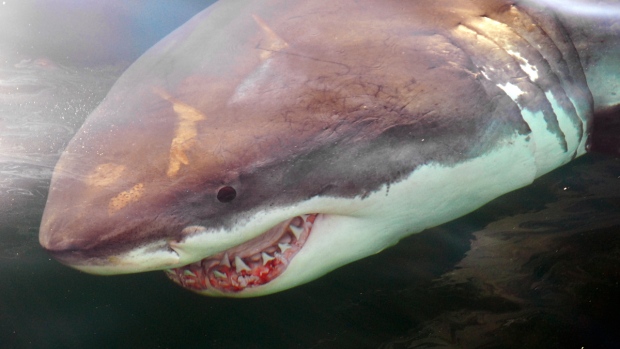It is stout but fast, a top predator affectionately called “Canada’s shark.”
But years of intense fishing left the porbeagle shark endangered, and the federal government is now considering protection measures.
The shark — which can reach more than three metres in length — is commonly found in Canada’s North Atlantic waters because of its tolerance for cold. But the population has declined by up to 78 per cent since 1961, when the country opened a porbeagle fishery.
The fishery has been closed since 2013, but the sharks reproduce slowly, giving their population a long recovery time.
“The question is not whether they’re endangered or not, that’s just a scientific status,” said Shannon Arnold of Halifax’s Ecology Action Centre.
“The question is how are they going to deal with that, which act, which sets of regulations come in to play to help that species recover.”
Arnold said the slow decision-making process has left the porbeagle “in limbo” with only vague protection measures, after being been formally assessed as endangered in 2004 and 2014 by an independent committee of scientists.
Arnold said listing the porbeagle under the Species at Risk Act would prompt necessary protective measures like enforcing a cap on accidental bycatch and investing federal money in population studies.
Fisheries and Oceans Canada said in an e-mail it will make a recommendation to the environment minister after reviewing input from the public and industry stakeholders, as well as scientific research. There is no current timeline for a decision, it said.
Arnold said an estimated 80 to 90 per cent of the porbeagle population is in Canadian waters, and researchers have identified its mating areas.
“We often refer to porbeagle as Canada’s shark,” said Arnold. “We have a lot of scientists who are interested in it, we could be doing really great survey work and really adding to the international assessment of how this shark is doing, but we haven’t resourced that.”
Protecting the porbeagle under the Species at Risk Act would help finance more research to better assess the population’s health, Arnold said.
The latest population assessment on the porbeagle was from a 2009 survey which estimated between 197,000 and 207,000 sharks in Canadian waters.
Emilie Novaczek, a marine biology PhD student at Memorial University of Newfoundland, thinks the porbeagle is an ideal species for protection under the Act, pointing to its low reproductive cycle, and its importance in regulating the ecosystem as a large apex predator.
Novaczek also noted that marine species are often less likely to be approved under the Act, and the consultation process often takes longer.
A 2016 paper on Canadian ocean policy published in the Marine Policy journal found that “of 39 marine fish species identified … as threatened or endangered, only five have been accepted for listing,” with a significantly lower acceptance rate than freshwater fish species.
In the case of the porbeagle shark, with a prime breeding time of 18 years, the lengthy decision-making process means that a key window of protection is slipping by, Novaczek said.
“We’ve missed out on protecting a full generation of these long-lived sharks,” Novaczek said in an e-mail. “Canada has a spotty record protecting marine fish and I would love to see a break in that track record.”
Arnold said it’s unclear how much weight the public’s input has on the federal decision, but she hopes the government comes to a speedy decision.
“We have a particular responsibility to do the most we can to help recover this species.”
































